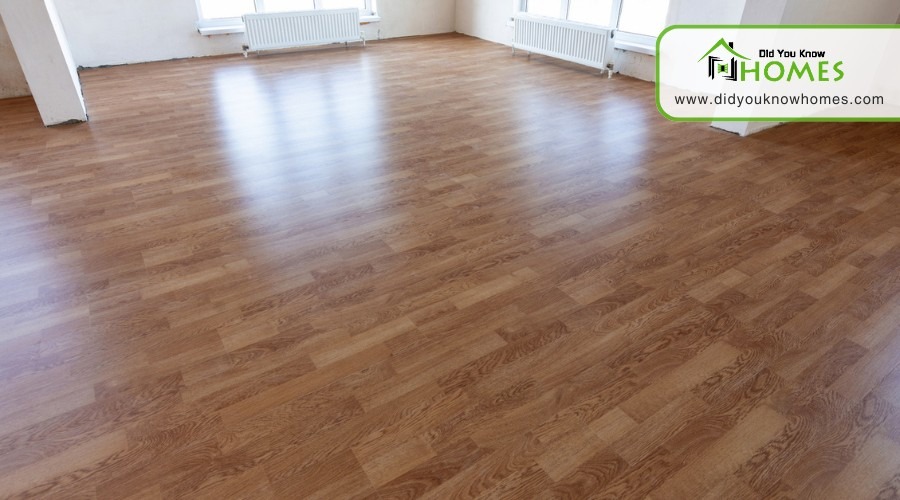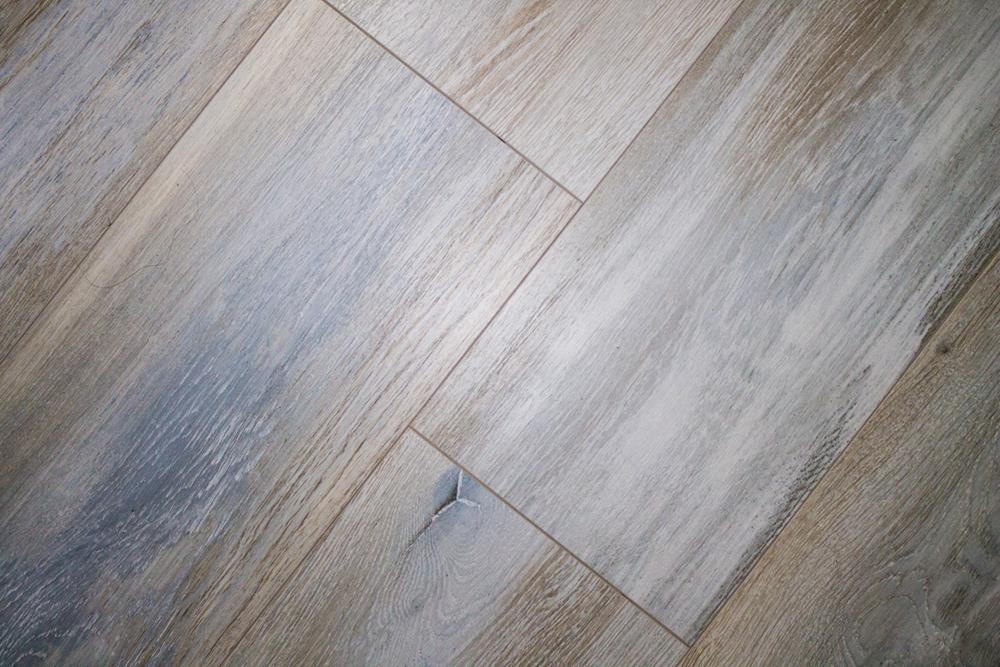Vinyl flooring is a popular choice for many homeowners due to its durability and aesthetic appeal. However, like any surface in a busy home, it is susceptible to scratches that can mar its smooth finish. Whether from daily foot traffic, pet claws, or moving furniture, these scratches can detract from the beauty of your floors.
Fortunately, there are effective strategies you can employ to prevent and minimize scratching, helping keep your vinyl floors looking pristine. This article provides practical tips on how to protect your vinyl flooring from unwanted scratches, ensuring it remains as good as new for years to come.
Why Do Vinyl Floors Get Scratched?
Vinyl flooring, while known for its durability and versatility, is not impervious to damage. One common issue many homeowners face is scratching. Understanding why vinyl floors are prone to scratches can help in effectively managing and preventing them. Here’s a look at some of the main reasons why these attractive floors might lose their luster over time.
Material Softness
Vinyl flooring is softer compared to other flooring materials like hardwood or tile. This inherent softness makes it more comfortable underfoot and excellent for sound absorption. However, it also means that it is more susceptible to impressions and scratches from heavy furniture, high heels, or pet nails. The softer surface can easily be marred by sharp objects or intense pressure points.
Debris and Grit
Small particles like dirt, sand, or grit carried in on shoes or pet paws can act like sandpaper on vinyl flooring surfaces. As people walk across the floor, these tiny particles can scratch and gradually wear down the finish of the vinyl. Over time, this can lead to visible marks and a dulled appearance if regular cleaning is neglected.
Furniture Movement
Moving furniture is one of the primary causes of scratches on vinyl flooring. Chairs, tables, and other heavy items can exert significant pressure on the floor, and if moved without proper protection, they can leave deep scratches. The lack of felt pads, wheels, or protective bases on furniture legs allows these heavy items to scrape across the vinyl, causing damage.
Improper Cleaning Tools
Using the wrong cleaning tools can also lead to scratches on vinyl floors. Stiff bristles, abrasive cleaning pads, or worn-out vacuums can all contribute to scratching the surface. It’s important to use the right cleaning equipment and techniques to maintain the integrity of the floor.
Quality of the Vinyl
The quality of the vinyl flooring itself can also affect its susceptibility to scratches. Lower-quality vinyl may not have a robust wear layer, making it less resistant to scratches and scuffs. Investing in high-quality, commercial-grade vinyl can provide a tougher surface that withstands everyday wear and tear better.
How to Prevent Scratches on Vinyl Floors
Keeping your vinyl floors in pristine condition involves preventative measures to guard against scratches, which are often the most visible and unsightly forms of wear. Protecting these surfaces from damage not only maintains their appearance but also extends their lifespan. Here are some practical tips on how to prevent scratches on your vinyl floors:
Regular Cleaning
Regular sweeping and mopping will help keep the floors clean and free of debris that can cause scratches.. Small particles like dust and sand can act like sandpaper underfoot, gradually scratching the surface. Sweep, vacuum with a soft brush attachment, or use a dry dust mop daily to minimize the accumulation of debris. For wet cleaning, use a damp mop with a mild cleaner designed for vinyl flooring, avoiding abrasive tools and harsh chemicals that could damage the finish. You can also try using a soft cloth when cleaning the floors, as this will help to prevent any scratches from occurring.
Use Protective Pads on Furniture
One of the most effective ways to prevent scratches is to use felt pads under the legs of furniture. Chairs, tables, sofas, and other heavy items can cause significant scratches when moved across the floor. Stick felt pads to the bottom of furniture legs to provide a soft barrier that smoothly glides across the vinyl without causing harm. Check and replace these pads regularly, as they can wear down or accumulate grit over time.
Employ Floor Mats and Rugs
Place floor mats or rugs at all entrances and high-traffic areas. These textiles capture dirt, grit, and other abrasive particles that can scratch floors, particularly in spaces where outdoor shoes are worn. Choose mats with non-staining backings to avoid discoloration of the vinyl. Regularly clean the mats to prevent the trapped particles from reaching the vinyl surface.
Implement a No-Shoes Policy
Consider implementing a no-shoes policy inside the home to drastically reduce the amount of dirt and debris brought onto your vinyl floors. This can significantly lessen the risk of scratches and other types of wear. Provide a shoe rack or designated area near the entrance for shoes, and encourage household members and guests to wear socks or indoor slippers.
Avoid Dragging Objects
Never drag furniture or heavy objects across a vinyl floor. If you need to move something heavy, use a dolly with rubber wheels or lift the item completely off the ground. If neither option is practical, lay down plywood or thick cardboard to create a smooth path that distributes the weight and minimizes direct contact with the floor.
Choose Proper Cleaning Equipment
Select the correct cleaning equipment to avoid unintentional scratches during routine maintenance. Use a vacuum cleaner with a soft brush attachment rather than one with a beater bar, which can damage the floor’s surface. Soft cloths and mops are preferable for cleaning and wiping up spills to prevent abrasive particles from scratching the floor while you clean.
Can You Remove Scratches from Vinyl Floors?
Fortunately, minor scratches can often be remedied with a few simple techniques, restoring the look of your floors. Here’s how you can address scratches on vinyl floors:
Clean the Affected Area
Begin by thoroughly cleaning the scratched area. Remove any dirt and debris to ensure that any repair efforts are not hindered by grime. A clean surface allows for better adhesion of any fillers or sealants used in the repair process.
Use a Repair Kit
For small and shallow scratches, a vinyl floor repair kit can be an effective solution. These kits typically include a filling compound and a finishing solution. Carefully follow the instructions to apply the compound to the scratch, then seal it to protect the repair from wear and moisture.
Apply Liquid Seam Sealer
If the scratch is very fine, liquid seam sealer—a clear compound designed to seal joints between vinyl tiles—can work well. This sealer fills the scratch and dries clear, blending the repair into the surrounding area. It’s important to apply the sealer precisely to the scratch and wipe off any excess to avoid a glossy patch on the matte surface.
Use a DIY Solution
For very light scratches, some homeowners find success with DIY solutions like rubbing a small amount of jojoba oil or WD-40 on the scratch. These substances can help to mask the scratch by filling it in and making it less visible. However, test these methods in an inconspicuous area first to ensure they do not damage the finish of your floor.
Consider Professional Help
If scratches are deep or the floor has extensive damage, it may be best to consult a professional. Flooring experts have specialized tools and techniques that can restore vinyl floors to near-original condition, which is particularly valuable for expensive or intricate flooring.
Prevent Future Scratches
Once you have addressed existing scratches, consider implementing preventive measures such as using protective pads under furniture, maintaining regular cleaning to remove abrasive particles, and placing mats at entryways to reduce the introduction of grit that can scratch the floor.
Interesting Facts About Vinyl Flooring
Vinyl flooring has become a popular choice among homeowners for its versatility and practicality. Offering a wide range of styles and being highly durable, vinyl is suitable for nearly every room in the house. Here are some interesting facts and statistics about vinyl flooring that highlight its appeal and growing popularity:
- Rapid Market Growth: The global vinyl flooring market is projected to reach approximately $48 billion by 2025, growing at a compound annual growth rate of around 7.4% from 2020. This growth is driven by increasing demand in the residential and commercial sectors.
- Durability: Vinyl flooring is known for its exceptional durability. It can last anywhere from 10 to 20 years if properly installed and maintained. This makes it a great long-term investment for busy households.
- Water Resistance: One of the most significant advantages of vinyl flooring is its resistance to water. This makes it an ideal choice for wet areas such as kitchens, bathrooms, and basements where other flooring types might not be suitable.
- Variety of Styles: Vinyl flooring offers an array of choices in terms of color, pattern, and texture. It can mimic the look of natural materials such as hardwood, stone, and ceramic tile, often at a fraction of the cost.
- Ease of Installation: Vinyl is one of the easiest flooring types to install, making it a favorite for DIY enthusiasts. Many vinyl products come with a click-lock design that allows them to be snapped together without glue or nails.
- Recyclability and Environmental Impact: Modern vinyl flooring is increasingly being made from recyclable materials. Additionally, the production process for vinyl has become more environmentally friendly over the years, although it is still not as sustainable as some other flooring options.
- Comfort: Vinyl flooring is softer underfoot compared to hard surfaces like tile or wood, thanks to its layered construction and padded underlay. This feature reduces noise and provides a comfortable walking surface.
- Cost-Effectiveness: Not only is vinyl flooring less expensive on average than many other flooring types, but it also reduces long-term costs due to its durability and low maintenance needs.
These facts and statistics underscore why vinyl flooring continues to be a favored choice for new construction and renovation projects alike, offering both style and substance in a variety of settings.
Conclusion
In conclusion, maintaining the pristine condition of your vinyl flooring involves proactive measures to prevent scratches. From regular cleaning to using furniture pads and placing area rugs, each strategy plays a crucial role in protecting your floors. By implementing these practical tips, you can extend the life of your vinyl flooring and keep it looking as good as new. For vinyl flooring installation, repair, and removal, you can avail our services at Custom Painting, Inc. For estimates and appointment scheduling, call us at (925) 294-8062 or fill out our Contact Form here.
Additional Suggestions
- Paper-based floor coverings can be a temporary option if you can’t find felt pads.
- Make sure to sweep your vinyl flooring in the Living Room, kitchen, and other areas in your home daily with a soft broom. This helps to prevent scratches on your flooring.




